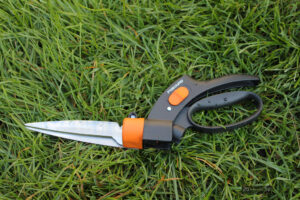Key Takeaways
- Balance exercises are essential for seniors to prevent falls and maintain independence.
- Simple exercises such as toe lifts and single-limb stances can significantly improve stability.
- Creating a safe environment and wearing proper footwear are key to effective balance workouts.
- Incorporating strength and flexibility routines enhances core fitness and overall mobility.
- Regular practice of balance exercises can lead to real-world benefits in everyday activities.
Staying Upright: Foundation of Senior Fitness
As we age, our bodies undergo changes that can challenge our balance and stability. But here’s the good news: with the right approach, we can strengthen our muscles and improve our balance, making falls much less likely. It’s not just about avoiding injuries; it’s about maintaining the freedom to move and live independently.
Why Balance and Stability Matter
Good balance isn’t just for gymnasts and athletes. For seniors, it’s a crucial aspect of everyday life. It allows us to walk without stumbling, climb stairs without hesitation, and bend over without falling. More importantly, it’s key to preventing falls, which are a leading cause of injury among older adults.
Reducing Fall Risks with Simple Movements
Maintaining balance as we age is a proactive measure, not a reactive one. By integrating simple exercises into our daily routine, we can enhance our body’s ability to stay upright and steady. This doesn’t require expensive equipment or gym memberships – just a commitment to practicing a few movements regularly.
Setting the Stage: Pre-Workout Essentials
Before diving into balance exercises, it’s essential to set the stage for a safe and effective workout. This means creating an environment that is free of hazards and wearing appropriate attire that will support your movements.
Creating a Safe Exercise Environment
First things first, ensure your exercise space is clear of clutter. Remove any rugs, cords, or furniture that could trip you up. Adequate lighting is also important, so you can see where you’re stepping. If you’re using a chair or counter for support, make sure it’s sturdy and won’t slip.
The Importance of Proper Footwear
When it comes to balance exercises, the right shoes can make all the difference. Opt for footwear with non-skid soles, good heel support, and enough cushioning to absorb shocks. This will help you maintain a good grip on the floor and reduce the risk of slipping.
Building Balance: The Core of Stability
- Stand behind a sturdy chair, holding onto the back for support.
- Lift one foot off the ground, hold for a count of ten, and then switch feet.
- As you progress, try to balance without holding onto the chair.
Building a strong core and lower body is fundamental to maintaining balance. The following exercises are designed to enhance stability and can be done in the comfort of your home.
Foot Taps: Starting with the Basics
Let’s begin with foot taps. This exercise is as simple as it sounds but incredibly effective for building lower body strength.
- Stand straight and face a step or a low, stable platform.
- Tap your right foot on the step, then bring it back down.
- Repeat with your left foot, alternating for 10-15 reps on each side.
Chair Squats: Strength and Support
Chair squats not only work on your balance but also strengthen your legs and core.
- Stand in front of a chair with your feet shoulder-width apart.
- Extend your arms for balance and slowly lower yourself down.
- Before sitting, pause and then stand back up. Aim for 10 reps.
Boosting Flexibility: A Key to Mobility
Flexibility is often overlooked, yet it’s a cornerstone of mobility, especially for seniors. As we age, our muscles can become shorter and less elastic, leading to a decrease in flexibility and range of motion. This can impact balance and make everyday movements more difficult. By incorporating flexibility exercises into our routine, we can help maintain our independence and reduce the risk of falls.
Seated Leg Stretches: Keeping It Gentle
Seated leg stretches are a safe way to begin enhancing flexibility. You can perform these exercises while sitting in a sturdy chair without wheels.
- Sit upright and extend one leg out in front of you.
- Lean forward from your hips until you feel a gentle stretch behind your thigh.
- Hold for 15-30 seconds, then switch legs.
Upper Body Stretches: Reaching for Better Health
Upper body flexibility is important for tasks like reaching for items on a shelf or getting dressed. Let’s work on that with some simple stretches.
- Sit or stand with your arms at your sides.
- Raise your arms overhead, stretching as high as comfortable.
- Hold for a few seconds, then release. Repeat 5-10 times.
Walking Tall: Advanced Balance Challenges
Once you’ve mastered the basics, it’s time to challenge yourself with more advanced balance exercises. These will test your stability and help you walk with confidence.
Heel-to-Toe Walk: A Test of Precision
The heel-to-toe walk is an excellent way to simulate a natural walking pattern while focusing on balance.
- Place the heel of one foot just in front of the toes of the other foot as if you are walking on a tightrope.
- Look straight ahead and take a step, placing the heel just in front of the toe of your other foot.
- Continue for 10-20 steps, using a counter or wall for balance if needed.
Stand on One Foot: Elevating Stability Practices
Standing on one foot is a powerful way to build balance and focus. It’s simple but effective.
- Stand behind a chair or near a counter for support.
- Lift one foot a few inches off the ground and balance on the other.
- Hold for as long as you can, aim for 10-30 seconds, then switch feet.
Remember, it’s not about how long you can hold the pose, but about the quality of your balance. Practice regularly, and you’ll see improvement.
Core Strength: Protecting the Center
Your core is the epicenter of balance and strength. A strong core supports your spine, improves posture, and reduces the risk of falls. Let’s target this area with a couple of exercises.
Abdominal Contractions: Unseen but Crucial
Abdominal contractions are a gentle way to build core strength without straining your back.
- Sit in a chair with your feet flat on the floor.
- Take a deep breath and as you exhale, pull your belly button towards your spine.
- Hold for a few seconds, then release. Repeat 10 times.
Sitting Twists: Engaging the Midsection
Twisting movements are great for the oblique muscles, which support the rotation and side-bending movements of your body.
- Sit upright in a chair with your feet flat on the ground.
- Place your hands behind your head or across your chest.
- Gently twist your torso to one side, hold for a moment, then twist to the other side.
- Do 5-10 twists to each side.
Engaging in Daily Activities: Real-World Applications
Balance and flexibility exercises have real-world applications that make everyday tasks easier and safer. By integrating these movements into daily activities, you can continually improve your balance and maintain your independence.
Cooking while Balancing: Practice in Action
Next time you’re in the kitchen, use the countertop for support while doing mini leg lifts or standing on one foot. This not only strengthens your legs but also helps you to multitask efficiently.
Gardening with Good Form: Bend and Stretch Safely
Gardening can be a great way to practice squats and stretches. When reaching for plants or tools, focus on maintaining your balance and using your legs rather than straining your back.
Fall Prevention: When Exercise Meets Everyday Life
Ultimately, the goal of balance and stability exercises is to prevent falls. By incorporating these movements into your daily routine, you’re not just exercising; you’re equipping yourself with the skills needed to navigate life safely.
Stair Climbing: Combining Strength and Balance
Stairs are an everyday challenge for many seniors. Practice climbing stairs with a secure railing to improve your balance and leg strength. Always take your time and focus on placing your entire foot on each step.
Remember, consistency is key. Regular practice of these exercises will help you stay strong, flexible, and balanced. Keep at it, and you’ll enjoy a greater sense of freedom and independence in your daily life.
Walks Outside: Navigating Varied Terrains
Walking outside offers more than just fresh air; it’s a chance to challenge your balance on different surfaces. Whether it’s grass, gravel, or uneven sidewalks, each step you take strengthens your stabilizing muscles. Begin with short walks in safe areas and gradually increase your distance as your confidence grows. Always wear supportive shoes and consider a walking stick or cane for extra stability if needed.
FAQ: Common Questions on Senior Balance & Stability
Let’s address some common questions you might have about senior balance and stability exercises. These answers will help you feel more confident about incorporating balance activities into your daily routine.
What are the Best Balance Exercises for Seniors Who are Just Starting Out?
If you’re just beginning, start with simple exercises like standing on one foot, walking heel-to-toe, or practicing sitting to standing without using your hands. These movements help build a solid foundation for balance and can be done almost anywhere, anytime.
How Often Should Seniors Perform Balance Exercises?
For best results, aim to perform balance exercises daily. Consistency is key to improving stability. Even a few minutes a day can make a significant difference in your balance and overall health.
Can Balance Exercises Help Prevent Falls?
Yes, balance exercises are one of the most effective ways to prevent falls. By strengthening your muscles and improving your stability, you’ll be less likely to lose your footing and fall.
Are There Any Safety Tips for Seniors During Balance Workouts?
Absolutely. Always ensure you have a sturdy piece of furniture or a countertop nearby to grab onto if you feel unsteady. Wear non-slip shoes, and if you’re using an exercise mat, make sure it’s secured to the floor to prevent slipping.
For example, when performing a single-limb stance, you could use a kitchen counter for support. As you gain confidence, try to reduce your reliance on the support until you can balance without it.
How Can Caregivers Assist Seniors with Balance Workouts?
Caregivers can offer physical support during exercises, provide reminders to practice daily, and help create a safe workout environment. Encouragement and supervision can go a long way in helping seniors feel confident and secure during their balance routines.




Leave a Reply